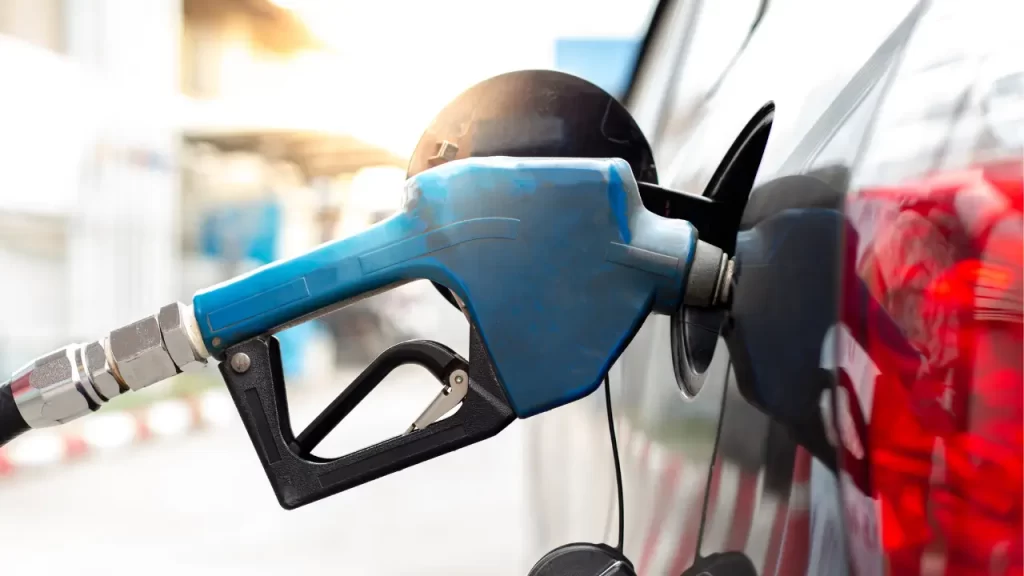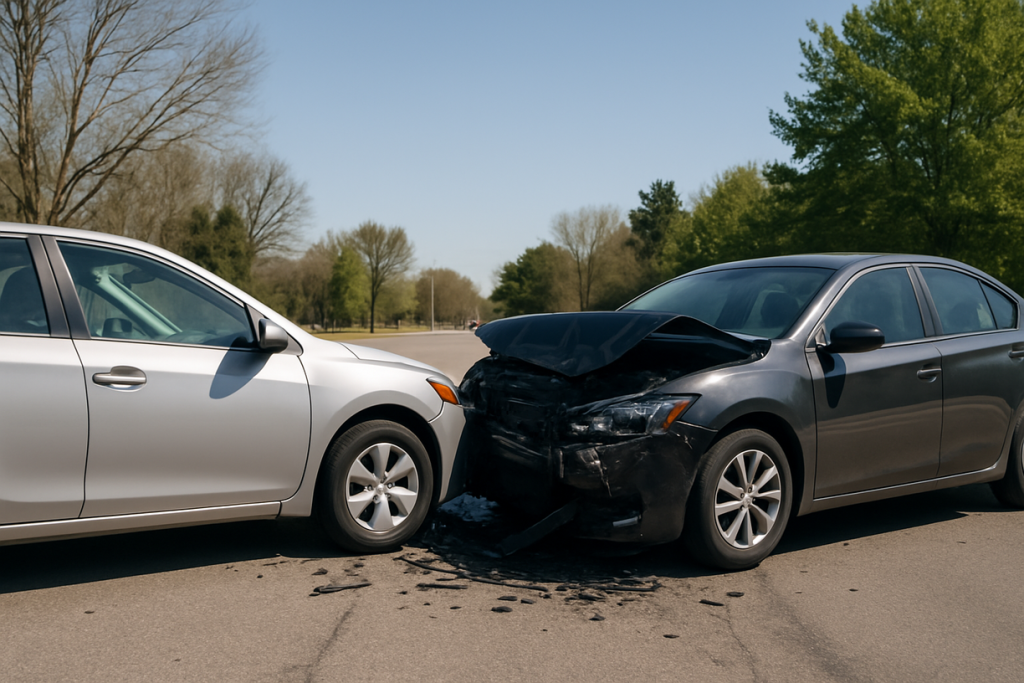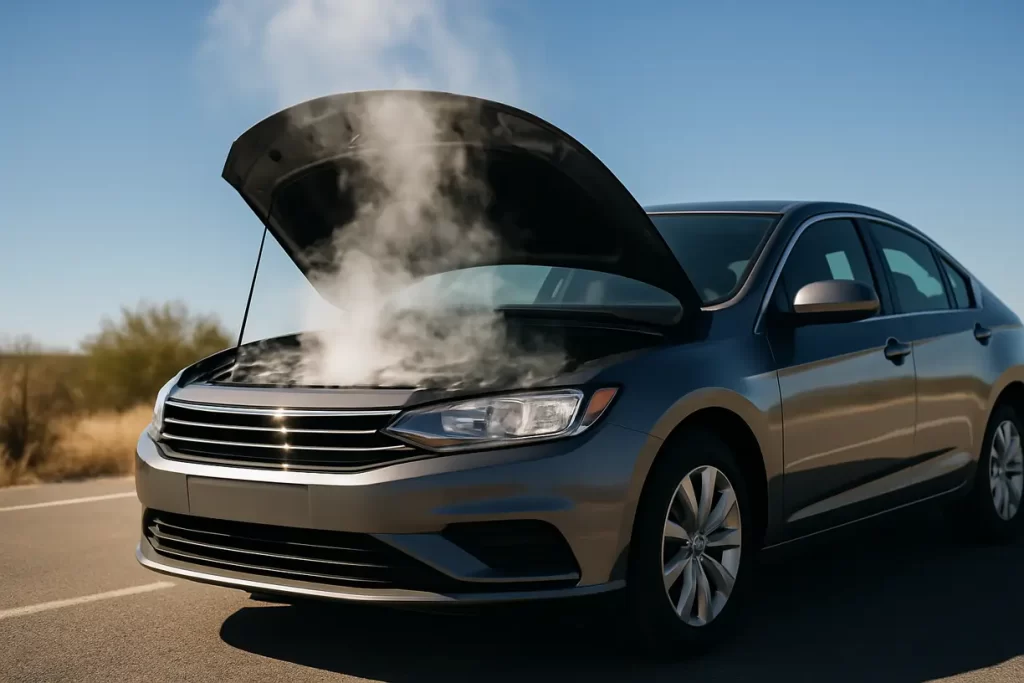Introduction
Car starting problems are the most common ones that turn out to be very frustrating for car owners. Just imagine it: you turn the key or press the start button, but instead of the expected result, you get only silence or a weak click. It’s a situation which can affect your whole day in a bad way. Although it may look like a simple problem, at the root there may be a range of different causes—the extent of which can be from a discharged battery all the way to complicated dysfunction of sensors.
It is very important to find out what has caused a car not to start beyond the convenience aspect only. A correct diagnosis may be the means through which you save money by not purchasing unnecessary repairs, keep yourself safe by not going into a dangerous place because your car broke down, and reduce your stress level by having yourself back on the road quickly. By knowing different causes, you become able to solve the problem on your own or explain clearly to a mechanic what is wrong.
The piece of writing clarifies the most frequent and not very common causes of car start problems. It also presents some effective methods for diagnosis, step-by-step aspects for the solution of the troubles, and some preventive maintenance. Whether you are a veteran car owner or just a beginner driver, the guide is for you to conquer car troubles promptly and smoothly.
Most Common Reasons Your Car Won’t Start
When your car refuses to start, the culprit is more likely to be one of the usual suspects. The first suspect is the battery. Batteries are made for a limited time of operation, and over that period, they gradually lose the ability to retain the charge. A dead or weak battery is the most common cause of your engine no-go. Dim headlights, flickering dashboard lights, or just a faint clicking sound when you turn the key might be signs of that. At times, a battery can be drained so much just by leaving the lights on or the interior lights working that it will be completely discharged.
Then, the starter motor is next. This little power source handles the job of turning the engine over when you press the ignition. If it’s not working properly, you may get one click or a rapid clicking sound, but the engine will not turn. Heat damage or worn-out brushes inside the starter can cause this failure.
The ignition switch can be the potential source of the problem as well. It is the electrical main point that passes power to the starter motor and the ignition system. A worn switch or a faulty one may cause the car to be unresponsive to the key turning, making you think that the battery is dead, and yet it is not.
Also, the fuel system problems are the next common issue. Besides running out of gas, which is the most obvious one, clogged fuel filters or a pump failing result in the engine starving of fuel. The absence of an adequate fuel supply will result in the engine failing to start or running unevenly and stalling.
At last, these could also be mechanical or engine problems, like a broken timing belt or compression issues, that will stop your car abruptly. These are less frequent problems, but they may be more serious and cause a lot of damage if you ignore them.
Being familiar with these frequent causes will enable you to identify the problem fast and choose if it is an easy solution or if you need to get the help of a mechanic.
Electrical Power But Engine Won’t Start
It may be the case that you come to your car and find that despite the dashboard lighting up, the radio playing, and the interior lights shining bright, the engine still does not turn over. A situation like this is a result of the fact that accessories such as lights and radios are designed to take a lot less power from the battery than the starter motor. It means that even if the battery has enough current to run these smaller systems, it might still not provide the high current required to start the engine.
Common culprits include corroded or loose battery terminals that restrict the flow of electricity. The starter relay or solenoid that is not working properly can also cause the starter to fail to engage; thus, no power will be available to turn the engine. The ignition switch could be a part that does not work correctly, and hence, it does not send the start signal. The neutral safety switch can be mentioned as one more cause of that situation. If the vehicle is not in Park or Neutral, it will not allow the engine to start because it acts as a safety feature.
Begin by checking if the battery terminals are clean and tight. When turning the key, a potential problem with the relay or solenoid can be revealed by a clicking sound, which you need to listen for. Ensure that the gear selector is fully in Park or Neutral. Usually, by performing these simple checks, one can identify the reason why there is power but the car will not start, thereby saving time and avoiding unnecessary repairs.
Car Won’t Start, Just Clicking
Generally, when you hear a clicking sound as you turn the key, it means the starter motor is giving it a try, but it still doesn’t have enough power. That click-click-click noise is most likely coming from a battery that is weak and can’t supply the high current needed to start the engine. It is also possible that the battery connections, which are either loose or corroded, might be blocking the electricity flow, because of which the starter motor keeps clicking but the engine is not turning over.
Besides that, the usual reason is a faulty starter solenoid—a small electrical switch, which, when on, supplies the starter motor with power. In case of failure, you will only get the sound of the clicking, but the engine will not be engaged. A simple and rapid way to ascertain would be to attempt to jump-start the car; if it works, then with great certainty the battery or connections are the culprits. Also, if you tap the starter gently with a tool, sometimes it will act as a temporary release for a stuck solenoid; however, the main thing is that a proper repair or replacement is done to fix the problem permanently.
Car Won’t Start, No Clicking
When you turn the key and there is no sound—not even a click—it most likely indicates that the starter motor has no power. The most common cause of this situation is a battery that is dead to the core. In some cases, the battery may appear to be okay; however, it may have lost its charge or have an internal defect. A faulty ignition switch, which does not send the start signal, may also be considered as the cause of the problem. If the main fuses or the fusible links are blown, the power to the starter or the engine control unit may be cut off, and the car would be silent. Similarly, wiring problems such as broken or disconnected cables may also result in the blockage of the electrical flow. Try checking the battery voltage first and then inspect the fuses and wiring for any visible damage. To solve it, usually you need to have a multimeter and some electrical knowledge to go through this silent no-start situation, so if you are not sure what you are doing, it is best to call a professional mechanic to avoid any further damage or safety risk.
Less Common and Rarely Discussed Causes
Beyond the usual suspects, a car that won’t start can sometimes be traced to less obvious, often overlooked issues. One such issue can be a defective or stuck ignition or steering lock. If the steering wheel is locked very tight, the key will not turn, thus it will not be possible to start the engine. You may find that the key cannot be turned unless you perform a small movement of the steering wheel, i.e., back and forth, to free up the lock.
Most importantly, sensors in an engine, especially the crankshaft and camshaft sensors, are responsible for informing the engine when to fire. If such sensors are broken or jammed, the engine control unit will not decide a moment to ignite the fuel-air mixture; thus, no-start without the presence of any electrical faults will occur.
Also, the air intake problems can be hidden and inaccessible for your attention. The clogged air filter or a stuck throttle body chokes the engine’s airflow, thus it requires a high effort or is impossible to start. Likewise, a flooded engine, which is the case of a petrol engine after several failed starts, will be as if the spark plugs are soaked in the fuel, which consequently will not have an ignition.
Diesel cars also have some particularities. The absence of AdBlue (diesel exhaust fluid) can be a reason why your engine will not start, as modern diesel engines rely on it for emissions control. It is very likely that the dashboard will give you the warning light so you can go refill it in time, but ignoring it can leave you stranded.
New cars use a lot of security features like immobilizers and key transponders. If these parts stop working, then the car may still refuse to start even though all other parts are fine. Sometimes all that is needed is a battery change, and a key fob or system restart will fix the problem.
In addition to fuses that are blown in the main circuit, fusible links that are cut in the starter power supply or the ECU are also sources of the car not starting. A car that is old can have its ignition blocked because of the distributor cap that is full of moisture. Also, if the timing belt is broken or the chain is wrong, then the engine timing will be incorrect, and on top of that, if the fuel pump relays or the control modules are not working properly, they will not allow the fuel to be delivered even if the pump is running.
These less common issues often require professional diagnostics, but knowing about them can save time and frustration.
Step-by-Step Troubleshooting Guide
Begin by giving your battery a thorough visual inspection. Check around the terminals for any corrosion or loose cables—these can cause a blockage in the current flow even if the battery is okay. After that, attempt to jump-start the vehicle. If it works, then the battery or its connections are probably the issue. Paying attention to the sound produced when you rotate the key is very important: do you hear a clicking, a crank, or silence? Each sound corresponds to a different problem.
Also, a quick glance at the dashboard will not hurt. An icon that looks like a battery or an immobilizer warning might be what you are missing. Be sure that the gear selector is in the Park or Neutral position—sometimes the neutral safety switch is the problem.
In case no sound is present or the engine still doesn’t respond after these attempts, you can go a step further and check fuses and fusible links. Besides, a faulty main fuse can stop power to the starter or the engine control unit. In this case, wiring problems, such as broken or disconnected cables, should also be considered.
If these simple procedures have not brought any solution, then it is best to hire a professional. On top of that, the electrical and mechanical systems are not always straightforward, and the wrong way to go about it can lead to more harm or safety problems. A mechanic has the possibility to perform tests in detail and repair the problem without wasting time.
Preventive Maintenance Tips
Through regular upkeep, your car remains dependable and can also save you from unexpected starting problems. Battery is a good place to start for checkups. It can be done by measuring the voltage with a multimeter; a normal battery must show more than 12.4 volts. Battery terminals should be cleaned and tightened in order to prevent the corrosion that can happen because of the electrical flow that is not going to be blocked. Don’t make frequent short trips that don’t allow the battery to recharge fully, and also use the electrical accessories less when the engine is off.
Periodically check the starter motor and solenoid as well. Wipe off any dirt or corrosion on the connections; make sure mounting bolts are tight, as this will stop vibration damage. If you have worn brushes or faulty parts, change them immediately so that you don’t experience failure unexpectedly.
Remember the fuel system is not to be neglected. Change the clogged fuel filters as it is recommended, and also a clean fuel tank will help you get rid of blockages. Changing air and cabin filters on a regular basis is important to get the proper airflow.
Besides that, look if there were any recalls or issues concerning your car model, and also adhere to the manufacturer’s maintenance schedule. Following these simple procedures guarantees that the car will be started smoothly without any hassle, and they also increase the lifetime of the parts.
Conclusion
When a car cannot start, it may be due to a variety of problems, from the car’s battery to complicated mechanical or electronic faults. Understanding the common and uncommon causes of a no-start condition equips you with the skills to work on the problem correctly and not fall into the trap of wrong repairs. Battery care as well as inspection of the system are some of the important steps in regular maintenance that is very essential in the prevention of these annoying breakdowns during a car journey. If you are unsure, it is always good to get professional help for an accurate diagnosis and to ensure that the repairs are done safely. Being vigilant and knowledgeable will keep your car in good condition, thus it will save your time, money, and stress on the road.
Frequently Asked Questions (FAQ)
How come my car only starts sometimes?
Starting intermittently usually points to one or more of the following issues: a battery that is on the verge of death, loose or corroded cables, a malfunctioning alternator, or problems with the starter.
Could a defective alternator be the source of starting problems?
Indeed, when the alternator is on the verge of failure, it will not supply the battery with the required energy for charging; thus, a weak or no start will be the result.
What is the reason if my car only turns over but does not start?
This is the most common case when there is no fuel delivery, spark plugs are defective, or sensors fail; thus, combustion cannot occur.
How can I find out if the battery or the starter is faulty?
Measure battery voltage and try to listen for any clicking sound; a weak battery or defective starter is usually characterized by clicking without the engine turning over.
In case of hearing clicking, is it okay to attempt a jump-start?
Certainly, clicking usually indicates that the battery is not sufficiently charged, so a jump-start will work.
If the car is completely dead and does not respond to a jump, what can I do?
Look at the fuses and the wires or get in touch with a mechanic.
Is it possible that a locked steering lock can prevent a car from starting?
Exactly, it can prevent the key from turning.
What will happen if my immobilizer system stops working?
Until the issue is fixed and the system is reset, the vehicle cannot be started.
In what ways does a flooded engine interfere with starting?
Fuel that is in excess gets spark plugs wet, so starting becomes difficult; waiting or drying plugs will alleviate this problem.
Running out of AdBlue—can it cause my diesel car not to start?
Indeed, many of the modern diesel vehicles will not start if there’s no AdBlue.


